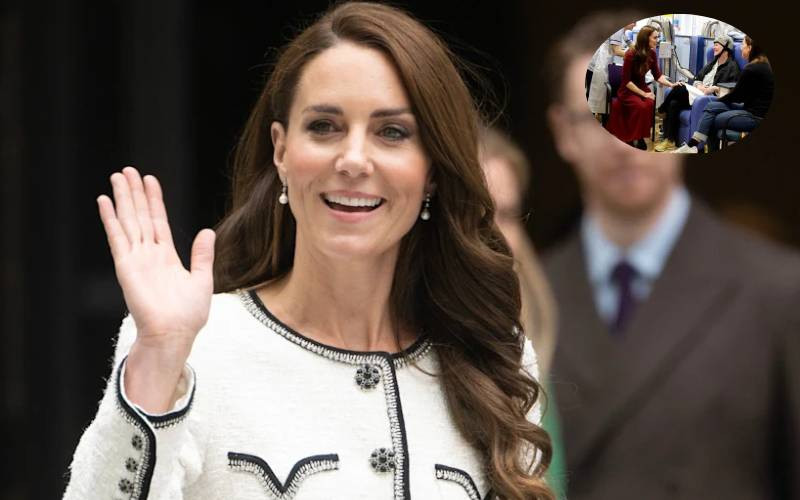
Kenya's first president Mzee Jomo Kenyatta took over leadership from a brutal, racist British regime. The white colonialists grudgingly handed over power.
The transition from colonialism to self-rule came with a lot of baggage. In neighbouring Somalia, when designing their national flag for their July 1962 independence, the Somalis deliberately put in it five stars to represent what they regarded as their rightful territory. It included the former British protectorate Somali-land, the former Italian territory of Somali (the current Somalia), the French Somaliland (now Djibouti), the Somali-speaking Ethiopian provinces of Ogaden and Haud, and the then Somali-dominated Northern Frontier District of Kenya.
The Somali claim to part of the northern frontier district gave the Kenyatta regime nightmares. It ignited a deadly and bloody shifta war. At a reconciliatory conference held in Rome by the British, Kenya's Tom Mboya, at his oratorical best, tore into shreds all what Somalis had said, concluding that the so-called Greater Somalia would forever remain a "bad dream in the minds of those who conceived it".
As Jomo battled with the shiftas, he quietly struggled with ill health. His eyes however, remained focused on the power struggles among the youthful leaders in his Cabinet. Meanwhile, a greedy and selfish clique from his Kiambu backyard was keen on taking over power from him.
Power Struggles
Leaders, such as Pio Gama Pinto and Argwings Kodhek, who started questioning rising corruption and illegal acquisition of land, were eliminated in quick succession. Others, who looked like presidential favourites, were enlisted for slaughter. The first wife of cabinet minister Julius Gikonyo Kiano, Ernestine, told me that her husband and Tom Mboya were among those placed on the elimination list as early as 1966. "I received an eerie visit from a young Special Branch officer, who told me about the people on the hit list. My husband and Tom Mboya were on it. They, however, argued that 'since Kiano loved alcohol, we can drink him to his death'." Kiano's deep state 'friends would therefore ensure that he had a reason to celebrate and drink every day.
The Kiambu clique knew that Jomo suffered from gout and had heart problems. The top civil servants led by Head of Civil Service Geoffrey Kareithi, started preparing for his death 10 years before it happened. "Sometime in 1968, President Kenyatta suffered a stroke while in Mombasa. He was in a coma for three days. Not known to many, as we held our breath and the President lay unconscious at his private residence at the Coast, we had put in contingency measures for his burial and smooth transition." Mzee refused to die.
Coup Plot
On January 25, 1971, Uganda president, Milton Obote, was toppled by the military while attending the Commonwealth Heads of Government Summit in Singapore. In April of 1971, three months after Obote was toppled, President Julius Nyerere of Tanzania telephoned Jomo with information that a group of Kenyans had approached him. They wanted Nyerere to help them overthrow the Kenya government. Their leader was Prof. Ouma Muga, a geography lecturer at the Makerere University. The Kenyans had been taken to Nyerere by a former Ugandan Foreign minister under Obote, Sam Odaka.
According to Geoffrey Kareithi, the disgruntled lot, wanted Nyerere to help them acquire guns and money to use to enlist support of the army. In 1976, the fight for Kenyatta's succession intensified. A group led by minister for State, Mbiyu Koinange, launched a campaign to change to constitution to stop the vice president from acting for 90 days in the event of the President's demise. The group made a blunder of picking, what Kareithi describes as; "the emotionally imbalanced and barely literate Kihika Kimani as its spokesman."
Meanwhile, Jomo's health continued to deteriorate. Kareithi, says in his unpublished memoir, Cool Under Fire, that the Kihika group had formed a killer squad called the Ngoroko whose main objective was to stop the vice president Daniel arap Moi from being sworn in as acting president in the event that Mzee died. The Ngoroko's were betting on Jomo dying in Nakuru, which would make the elimination of Moi and control of things easier for them.
When Kenyatta eventually closed his eyes eternally on August 22, 1978, Kareithi organised a security team to escort Moi to Nairobi from his home in Nakuru. Moi narrowly escaped a road block erected outside Nakuru at Lanet, by 20 minutes. The road block was manned by former Rift Valley police boss, James Mungai who was in the anti-Moi camp. They aimed to capture Moi and assassinate him.
Retired ambassador John Mwaura in his unpublished memoir, For the Flag and My Country recalls his conversation with then Coast Provincial Commissioner Eliud Mahihu over Jomo's ill health and Kenya's future. "I remember asking him why those close to Mzee wouldn't advise him to retire or hand over power to someone young instead of waiting until he dies in office. Mahihu looked at me keenly. With a serious look on his face, he told me that the president was surrounded by some evil-minded people. This group from Kiambu district didn't think anybody else should succeed Kenyatta while alive."
Moi therefore took over power on wobbly feet. He slowly and cleverly moved to galvanise support and built power structures. Moi was still settling in when the 1982, military coup attempt happened. He used the failed coup to clean up his slate and rid himself of anyone he considered an enemy or a threat. For 24 years, Moi, a man who had been described by his detractors as a passing cloud, ruled Kenya.
As Moi neared the end of his reign, political realignments began to take shape. Moi imposed Uhuru Muigai Kenyatta, son of his predecessor Mzee Jomo Kenyatta, as his preferred successor. The ruling party Kanu imploded. Leaders close to Moi deserted him and jumped ship as the country moved close to the 2002 general elections.
Moi's former Vice President Mwai Kibaki emerged victor in the 2002 elections defeating Uhuru, Moi's choice. Kibaki, on a wheel chair, presided over the most chaotic hand over and swearing in ceremony held at Nairobi's Uhuru Park.
Just like in the days of Jomo, a clique quickly coalesced around Kibaki. The group from Kibaki's Kikuyu community and the Mt Kenya region, took over key cabinet positions meant for members of the coalition that helped Kibaki ascend to power. As Kibaki recovered and settled in office, he rejected the Bomas Constitution that had been developed by experts appointed by Moi. He imposed his own draft which was defeated at a referendum in 2005.
Kibaki's quest for power, his desire to retain an imperial presidency like Moi and Jomo, plunged the country into its darkest and bloodiest period during the 2007/2008 post-election violence. His second term was marked with tensions, protests and bad blood. In 2010 a new constitution was promulgated. Eventually Kibaki exited and his godson, Uhuru Kenyatta succeeded him. The transition from Kibaki to Uhuru looked smooth on the outside, but the country was boiling. Kibaki had left a nation divided and burning from flames of tribalism in a deep pit.
Uhuru and Ruto
Kenyatta and his deputy William Ruto took over power in 2013 with the yoke of International Criminal Court (ICC), hanging around their necks. Just as the controversial duo was settling in, one of Nairobi's upmarket shopping mall, Westgate, was hit by terrorists. At least 67 people died during the attack by suspected militants in September 2013. The two braved the ICC, the terror attack and other challenges bedeviling their administration. They successfully cleared their first term. Then, after the 2017 elections, the self-styled, old mafia from Mt Kenya, took charge once more. Uhuru suddenly sidelined his deputy William Ruto and formed an alliance with perennial rival Raila Amolo Odinga. The country had engaged another transition gear.
Since Kenya's independence, the country's civil service and development programmes operate around the five to ten year governance cycle. Kenya is always in an election cycle and transition mood. Leaders come to power with their own agenda and teams. Programmes initiated by the previous administrations suffer. They are later abandoned. The country keeps incurring losses.
 The Standard Group Plc is a multi-media organization with investments in media platforms spanning newspaper print
operations, television, radio broadcasting, digital and online services. The Standard Group is recognized as a
leading multi-media house in Kenya with a key influence in matters of national and international interest.
The Standard Group Plc is a multi-media organization with investments in media platforms spanning newspaper print
operations, television, radio broadcasting, digital and online services. The Standard Group is recognized as a
leading multi-media house in Kenya with a key influence in matters of national and international interest.










